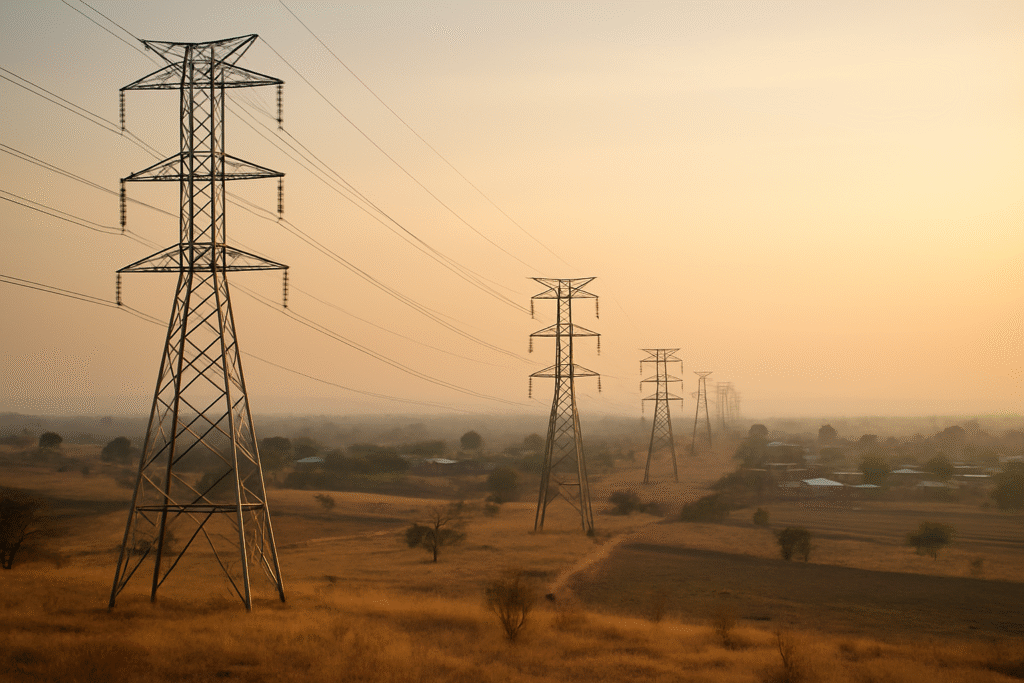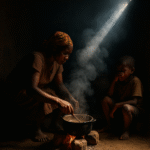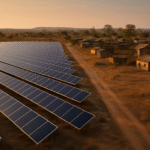|
Obtenez votre Trinity Audio joueur prêt...
|
The world is in the midst of the largest energy-investment boom in history. According to the International Energy Agency (IEA), global clean-energy spending is expected to surpass USD 3.3 trillion in 2025, fuelled by record growth in solar, grids, electric vehicles, and battery manufacturing. China, Europe, and the United States are reshaping their industrial strategies at an unprecedented scale. Capital is flowing, markets are expanding, and supply chains are reorganising.
Yet, beneath this global surge sits a stark and troubling contradiction: Africa remains largely left out of this momentum.
Despite being home to the youngest population, the fastest-growing cities, and some of the world’s most promising renewable resources, Africa continues to receive a disproportionately small share of the financing that should underpin its energy transformation. It holds 60% of the world’s best solar resources, but attracts barely 2% of global solar investment. It has vast potential for wind, geothermal, and green hydrogen, but struggles to mobilise long-term capital for even modest projects.
This is not merely a story about financing gaps; it is a story about structural inequities that limit Africa’s ability to participate on fair terms in the global energy transition.
The result is a stalled “flip”: the shift from fossil-fuel dependence to clean-energy resilience, from weak grids to modern systems, from energy poverty to universal access. Without a profound rethinking of financing arrangements, Africa risks arriving late, or not at all, to the world’s green future.
Africa’s Paradox: Rich in Resources, Poor in Capital
Africa’s energy paradox has been well documented but insufficiently addressed. The continent is richly endowed: abundant sunshine, strong wind corridors, critical minerals essential for clean-tech manufacturing (including cobalt, manganese, and rare earths), and young workers eager for opportunities.
Yet, the investment flows do not mirror this potential. The IEA estimates that Africa needs USD 90–100 billion annually in energy investment to meet its development and climate goals by 2030. Today, it receives less than USD 30 billion, a third of what is required.
The reasons are both structural and systemic:
1. High risk premiums and investor perceptions
Africa is often treated as a high-risk market regardless of the country or project. Currency fluctuations, regulatory uncertainty, and the uneven performance of state-owned utilities elevate perceived risk, raising borrowing costs and deterring private investors. Finance is available globally, but Africa pays more to access less.
2. Weak grids and inadequate infrastructure
Renewables cannot scale without strong grids. Yet, grid investment, the “plumbing” of the energy transition, remains one of Africa’s most underfunded needs. Transmission networks are weak, rural coverage remains sparse, and cross-border interconnections are limited. Without robust grids, even the most bankable solar project struggles to reach consumers.
3. Concessional finance is misaligned or insufficient
Multilateral development banks and climate funds often move too slowly, lending remains fragmented, and local-currency solutions are rare. According to the African Development Bank (AfDB), climate finance flows to Africa cover less than 12% of the continent’s transition needs, and much of that fundinggoes to middle-income countries, bypassing the poorest communities.
4. Development needs collide with decarbonisation pressures
African governments must expand electricity access, industrialise, and create jobs while simultaneously decarbonising. When concessional finance is scarce, political leaders understandably turn to domestic fossil fuels to sustain revenue and energy security, a rational choice born of constrained options.
The continent is not short on ambition; it is short on affordable capital, structural support, and global fairness.
A Bottleneck with Human Consequences
The financing crisis is not abstract. It has direct, measurable impacts on human wellbeing.
More than 600 million Africans still lack electricity, and nearly one billion rely on biomass wood, charcoal, and animal waste to cook. The health consequences are devastating: 2.5 million lives are lost annually from household air pollution, most of them women and children.
Even where electrification has improved, reliability remains a concern. The continent loses an estimated 2–4% of GDP annually due to power outages and weak grid infrastructure, according to the World Bank. Small businesses suffer, clinics cannot refrigerate vaccines consistently, and industries struggle with uncertain power supply.
Africa’s energy future cannot be understood solely through megawatts or emissions. It must be evaluated through people’s lives, opportunities, and health outcomes.
This is the moral argument: the energy transition is not merely about carbon; it is about justice, dignity, and the unlocking of human potential.
Why the Flip Has Not Happened: Structural Blockages Explained
After analysing the IEA’s latest projections, stakeholder insights, and regional investment trends, three structural blockages emerge as the most significant constraints to Africa’s clean-energy transition:
Blockage 1: Investment models do not fit African realities
Africa’s markets require patient capital, blended financing, and local-currency solutions, not short-term, high-return ventures. Yet, much global climate finance remains structured for advanced markets, not emerging ones. Instruments that could de-risk investments, such as guarantees, insurance, and concessional loans, remain underutilised.
Blockage 2: Grid and utility reform lag behind renewable ambitions
Renewable projects are being approved faster than utilities can absorb them. Utilities across Africa face operational deficits, outdated tariff structures, and weak planning systems. Without reform, investment will continue to bypass countries where off-takers remain too weak to guarantee returns.
Blockage 3: Project pipelines are too small, too fragmented, or too slow
Africa does not lack ideas; it lacks bankable projects. Planning processes are slow, permitting takes months or years, and cross-border power-pool projects struggle with fragmented governance. Investors frequently complain that Africa lacks large, investment-ready opportunities, not because they do not exist, but because institutional capacity to structure them is limited.
If the World Wants Africa to Transition, It Must Change How It Finances Africa
Africa cannot transition on aspiration alone; it requires a fundamental redesign of the financing ecosystem. Based on emerging trends, three priorities stand out:
1. Scale concessional finance to crowd in private capital
The AfDB and IEA both stress that concessional finance is the single most important tool for unlocking Africa’s transition. Instruments that absorb early risk, first-loss guarantees, blended capital, and viability-gap funding must become the norm, not the exception.
2. Reform and recapitalise multilateral development banks
The current system is too small, too slow, and too risk-averse for the scale of Africa’s needs. The G20-commissioned reports calling for multilateral bank reform should be accelerated, with Africa’s voice at the centre of redesign.
3. Build African manufacturing and value chains
Africa cannot rely solely on imported technologies. Countries like Morocco, Egypt, Kenya, South Africa, and Rwanda are emerging as regional manufacturing hubs. Scaling these industries will lower costs, create jobs, and strengthen investment attractiveness.
Brookings Institution research highlights that African industrialisation anchored in clean energy could create millions of jobs if financing aligns with domestic value creation.
Africa Cannot Transition Without Agency
A recurring theme in global climate discourse is that Africa must wait for the world’s financing commitments to materialise. But African governments, development banks, and private institutions must also assert greater leadership:
- Reform utilities to make off-take reliable.
- Streamline permitting to accelerate project timelines.
- Develop regional green-infrastructure corridors.
- Strengthen domestic capital markets.
- Create national transition compacts aligning ministries, donors, and the private sector.
This is not simply about attracting finance. It is about shaping the terms of Africa’s transition.
Conclusion: The Transition Will Not Happen Until the Money Moves in the Right Direction
Africa’s energy transition is both a continental development imperative and a global climate necessity. But ambition cannot substitute for investment, and potential cannot replace planning.
The global community has a choice: treat Africa as an afterthought in the energy transition, or as the frontier of the next great economic transformation.
The former guarantees failure.
The latter requires courage, coordination, and capital.
Africa is ready. The world must meet it halfway.
“Finance is the bloodstream of the energy transition. Until Africa receives its fair flow, the promise of a clean-energy future will remain out of reach.”
Suivre Transition énergétique en Afrique pour plus de mises à jour :
![]()
![]()



